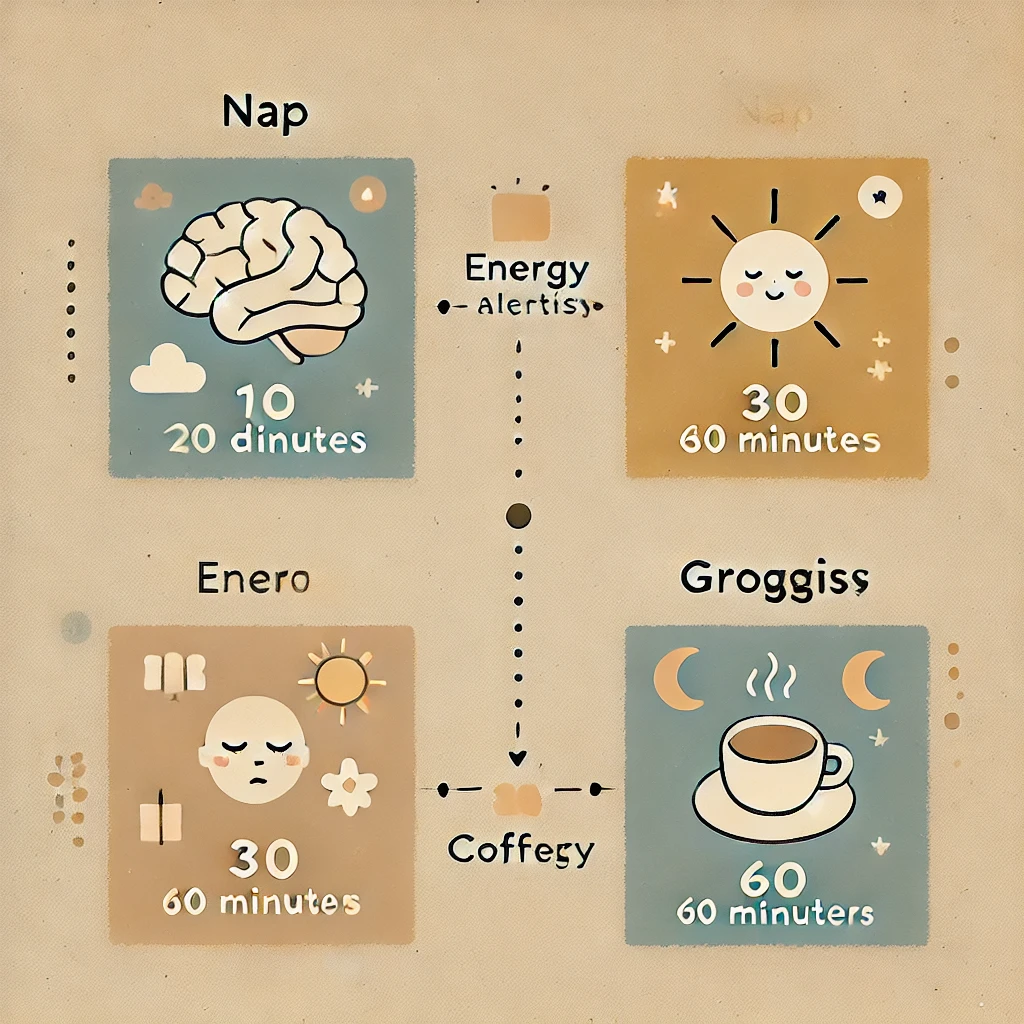The Science of Power Naps: How to Nap for Maximum Energy & Productivity
Ever feel that mid-afternoon slump where your brain goes foggy, your eyelids droop, and you’re seconds away from nodding off at your desk? You’re not alone. Here’s the good news: the science of power naps might just be your ticket to staying sharp and energized—without the caffeine crash. And let’s be honest, who wouldn’t love a legit reason to sneak in a nap?
Let’s dive into why short naps work so well, how to make them part of your daily routine, and what mistakes to avoid so you wake up refreshed instead of groggy.
Why Power Naps Matter
Power naps are like a tiny reboot for your brain. They help reduce stress, improve memory, and give your energy levels a serious boost. Think of it like restarting your phone when it gets sluggish—except it’s your mind getting that refresh.
Benefits of Power Naps
- Sharper focus: A quick nap improves alertness and concentration for hours afterward.
- Better memory: Napping helps your brain store and recall information.
- Mood boost: A nap can help regulate emotions and lower stress.
- Increased productivity: You might get more done after 20 minutes of rest than an hour of struggling through brain fog.
And science backs it up! According to the Harvard Health blog, even a short nap can improve performance by 34% and alertness by 54%.
Check out how poor sleep affects your mental health →
The Best Nap Lengths for Maximum Energy
When it comes to napping, timing is everything. The right nap length can leave you feeling refreshed, while too much nap time can make you feel groggy.
Nap Duration Breakdown
- 10-20 minutes: The ideal power nap. You get the benefits of rest without falling into deep sleep.
- 30 minutes: Can lead to sleep inertia—that fuzzy, heavy feeling when you wake up.
- 60 minutes: Good for memory and deep thinking, but some grogginess is likely.
- 90 minutes: A full sleep cycle. Great for creativity and emotional reset.
It might seem odd that a longer nap could make you feel worse, but it’s all about where you are in the sleep cycle when you wake up. Wake up during deep sleep? Hello, grogginess. That’s why 10-20 minutes is the sweet spot.
✨ Pro tip: If you only have a few minutes, stick with the 10-20 minute nap. It’s surprisingly effective! Learn more about timing naps in this helpful guide from Healium.
Struggling with your body clock? Here’s how to reset your circadian rhythm →
Best Time of Day for a Power Nap
Ever notice how you get super sleepy after lunch? That’s because your body naturally dips in energy in the early afternoon.
Ideal Nap Timing
- Best window: Between 1 PM and 3 PM.
- Avoid: Napping after 4 PM can mess with your nighttime sleep.
- Night owls or shift workers: Early morning naps can help after a long night.
This midday dip isn’t just in your head—it’s part of your body’s circadian rhythm. If you can sneak away for a nap during this window, your body will thank you.
Learn why you’re waking up at 3 AM →
How to Power Nap Like a Pro
The science of power naps isn’t just about how long you sleep. Your environment matters too.
Nap-Boosting Tips
- Find a dark, quiet space: Use blackout curtains, eye masks, or white noise.
- Set an alarm: Keep your nap to 20 minutes to avoid grogginess.
- Try a coffee nap: Drink a cup of coffee, then nap immediately. The caffeine kicks in just as you wake up.
- Be consistent: Try napping around the same time every day to train your body.
Bonus tip: Some people love using calming scents like lavender or playing soft nature sounds to help ease into nap mode. Find what helps you relax the quickest.
Need better sleep at night? Try a bedtime routine that works →
Napping Mistakes to Avoid
Let’s clear the air: naps aren’t lazy. But some nap habits can backfire if you’re not careful.
What Not to Do
- Don’t nap too long: Unless it’s a full 90-minute cycle, aim for 20 minutes.
- Don’t nap too late: Save your snoozing for early afternoons.
- Don’t skip naps when overtired: A short nap can help you reset.
- Don’t nap in bright or noisy places: It’s harder to relax when your senses are overstimulated.
Common sense, right? But we’ve all been there—thinking, “I’ll just rest my eyes for a second…” and waking up two hours later wondering what year it is.
Hit snooze a lot? Here’s why you might want to stop →
When to Avoid Napping
Power naps are great, but they’re not for everyone all the time.
Skip Naps If…
- You have insomnia and struggle to fall asleep at night.
- You have a sleep disorder like sleep apnea.
- You’re trying to reset your sleep schedule after jet lag or an all-nighter.
In these cases, napping might do more harm than good. Instead, focus on improving your nighttime routine and sleep hygiene. Try these 10 sleep hacks for falling asleep faster →
Learn how food affects your sleep quality →
Final Thoughts: Recharge the Right Way
Napping isn’t just a luxury—it’s a tool. The science of power naps shows us that short, intentional rest can seriously level up your energy, focus, and mood. Just remember:
- Keep it short and sweet (10-20 minutes is golden).
- Nap early in the afternoon.
- Make your nap space cozy and quiet.
Want to upgrade all your sleep habits, not just naps? Don’t miss our Ultimate Sleep Guide →
Start with a nap today. Seriously. Find a comfy chair, pop on an eye mask, set your alarm for 20 minutes, and see how you feel. You might just power through your afternoon like a champ!















